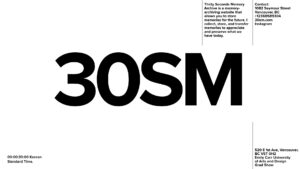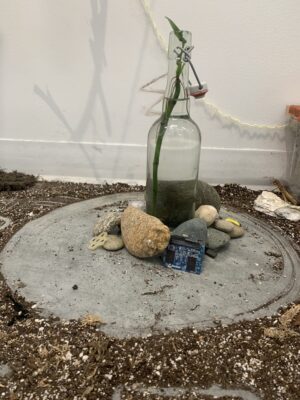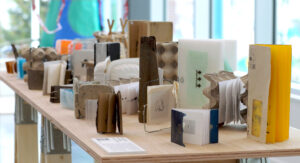Interacting with complex information
Kala Brownlee
Award Recipient
ECU Health Design Award for Innovation
Exploring what job aids could be
The Level of Sitting Scale (LSS) developed by British Columbia’s Children’s Hospital is the case study for this project. The LSS is a clinical assessment tool to help a medical professional evaluate a person’s stability and dynamic movement while sitting. This exhibition features a series of objects demonstrating interaction with the information in the original LSS documentation, specifically related to the assessment criteria. Participation and interaction is an emphasis of this project, and it seeks to explore the physicality of information accessibility.
#1 The LSS fan book
2 x 8 cm



This book is a combination of iconographic and textual instructions.
#2 The LSS ring book
10 cm diameter



This book uses colours to identify broader categories. It features iconographic and abbreviated information.
#3 The LSS wheel
42.5 cm x 27 cm


This wheel is an interactive object with iconographic and abbreviated information displayed on one plane.
#4 The LSS volvelle
20 cm x 20 cm




This is a physical information wheel that shows a level number when all the aspects of a level line up. The use of analogue calculation devices similar to this goes back centuries.
#5 The LSS poster
25 cm x 25 cm

This poster shows each level iconographically on one plane.
#6 The LSS slider

This slider shows the broad categorical information for each section of the scale, one section at a time.
#7 The LSS shapes

This series is an abstraction of the levels in unique shapes. The shapes can be used to reveal the aspects of each individual level.
Backstory
The information related to the Level of Sitting Scale came to my attention because the author, Debbie Field, was aiming to make it more accessible to clinicians and to resolve some difficulty in navigating nuances in the information of the assessment documentation specifically. At BC Children’s Hospital typical repositories for similar information is in PDFs and educational courses published online. By using this material as a case study for my capstone project I was able to combine a real-world problem with my love of things made with paper to explore what other form job aids for BC Children’s Hospital could be.



Acknowledgements
I’d like to thank my instructor Charlotte Falk for giving me guidance, feedback, patience and space to help me reflect on what my practice could be; my family and friends for supporting me and encouraging me to pursue school late in life; my cohort for helping me understand how to communicate about this project and providing a supportive environment in the studio; to whoever brought the White Rabbit candies; and Debbie who was my north star for this project and who also allowed me to do whatever I wanted with her original materials.
It is on the unceded xʷməθkʷəy̓əm (Musqueam), Sḵwx̱wú7mesh (Squamish), and səlilwətaɬ (Tsleil-Waututh) lands that I, an uninvited settler, practice, live and celebrate.




